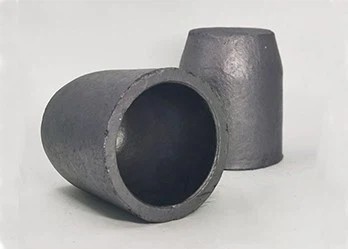PRODUCTS
Graphite Crucible
Products Description Natural graphite is made of natural flake graphite as the main raw material, and clay and other refractory materials are added. It is generally called clay graphite crucible, and the one with pitch as binder is carbon binder crucible. The crucible made only by the sintering force of clay is called the logo clay binder crucible, the former has excellent strength and thermal shock resistance. Artificial graphite crucibles are usually used to melt small amounts of precious metals and high-purity metals or high-melting point metals and oxides. Features 1.High thermal conductivi
Composition: Premium materials such as high alumina oxide, magnesium oxide, and silicon carbide, with customizable composition based on client requirements.
Form: Available in powder, brick, board, and castable forms to suit various application needs.
Refractoriness: Standard range from 1200°C to 1800°C, with options for higher temperature customization.
Application Fields: Widely used in industries such as steel, cement, glass, and petrochemicals for furnace lining and insulation.
Packaging: Options include 25 kg bags, bulk bags, and custom packaging solutions compliant with global transportation standards.
Introduction
Our experienced R&D team can customize the material, form, and size according to your specific application needs while ensuring compliance with international quality standards. With rigorous quality control and advanced production facilities, we guarantee products with high refractoriness, excellent compressive strength, and long-lasting durability. Whether you are in the steel, cement, glass, or petrochemical industry, we are your trusted partner, supporting the success of your projects.
For customization inquiries, please feel free to contact us. We will provide tailor-made solutions based on your requirements.
Graphite Crucible Details
Products Description
Natural graphite is made of natural flake graphite as the main raw material, and clay and other refractory materials are added. It is generally called clay graphite crucible, and the one with pitch as binder is carbon binder crucible. The crucible made only by the sintering force of clay is called the logo clay binder crucible, the former has excellent strength and thermal shock resistance.
Artificial graphite crucibles are usually used to melt small amounts of precious metals and high-purity metals or high-melting point metals and oxides.
Features
1.High thermal conductivity: The melting time is shortened due to the use of materials such as graphite with high thermal conductivity
2.Thermal shock resistance: strong thermal shock resistance, not easy to break for rapid cooling and rapid heating
3.High heat resistance: high refractoriness, can withstand high temperature of 1200 ~ 1600 ℃
4.Corrosion resistance: strong corrosion resistance against molten soup
5.Resistance to mechanical shock: It has a certain strength against mechanical shock
Application
Crucibles are most suitable for melting alloys of various types and small quantities. That is to say, if you want to change the type of alloy, you only need to change the graphite crucible.
1) Crucible for copper alloy melting
For copper and copper alloys it is important to melt rapidly (rapidly). Because copper is easy to oxidize at high temperature, the time is prolonged, and the molten soup is oxidized, which will cause the occurrence of poor casting quality. Of course, the adjustment of the combustion gas mist of the crucible furnace is also important. Judging from the shape of the graphite crucible, the long shape has good heat absorption and can shorten the melting time.

For crucibles for copper alloys, special attention should be paid to the corrosion resistance of the molten soup at high temperatures of 1100°C to 1250°C and the thermal shock resistance in the high-temperature mist in the furnace during the production process.
2) Crucibles for melting light metal alloys
In the melting of light metals, the same high proportion is the melting of aluminum alloy die-casting and aluminum alloy castings, and part of it is the melting of zinc alloys.
Tilting crucible furnace is generally used in concentrated melting. In addition, #3300 graphite crucible is also widely used for recycling and melting of cutting waste.













